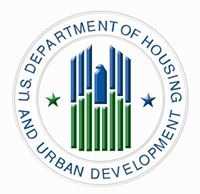WASHINGTON, D.C. – April 22, 2013 – (RealEstateRama) — The American Institute of Architects (AIA) and its Committee on the Environment (COTE) has selected 355 11th Street: The Matarozzi/Pelsinger Multi-Use Building, in San Francisco by Aidlin Darling Design as the inaugural recipient of the Top Ten Plus. The Top Ten Plus recognizes one past AIA COTE Top Ten Projects Award recipient which has quantifiable metrics that demonstrate the true impact the sustainable design has achieve. You can get more information on the project and see images here: http://www.aiatopten.org/node/241
The project at 355 11th Street was recognized as a 2010 AIA/COTE Top Ten Project Award recipient. The project is a LEED-NC Gold adaptive reuse of a historic and previously derelict turn-of the-century industrial building which includes a LEED-CI Platinum restaurant on the ground floor. The buildings former parking lot has now been transformed into an outdoor dining courtyard and organic garden where herbs are grown for use within the restaurant. Since the restaurant has opened below, the heat generated from the kitchen, on the ground floor, has resulted in no additional heat being needed in the office space for all but the handful of cold days in the year.
While solar energy harvesting, a green roof, and natural ventilation make the largest quantitative impact on the building’s overall sustainability, it is the new exterior skin that provided the most fertile territory to merge sustainability with architectural design. The building’s new metal skin is perforated with fields of small holes that allow light and air to pass through new operable windows hidden beyond. The perforated outer skin mitigates solar heat gain while enabling cross-ventilation of the interior.
The nonirrigated living roof, planted with drought-resistant native/adapted plant species, serves to filter storm water, insulate the building, and decrease the urban heat-island effect which has resulted in 57% of precipitation managed on site. Pervious surfaces, including landscaping, pervious pavers and drivable grass pavers, account for over 85% of the non-building site area. As expected, the drought resistant native/adaptive plants no longer require irrigation. Excluding the restaurant process water use, the water usage within the building has remained consistent with design assumptions, with a use of 97,240 gallons per year in 2009, the first full year of occupation.
The generous daylight and passive cooling of the building has resulted in less than expected energy use. For 2011, the office spaces utilized 25,440 kWh of electricity against the produced energy of 26,267 kWh for the two spaces, resulting in 103.3% of the energy being produced on site. This is greater than the expected/projected savings of 79%, even with a 40% increase in occupancy.
After 4 ½ years of use, the office spaces still looks new, in large part due to the durability of the materials used. Recycling and composting has continued to be important to the organization, with 40% of waste recycled, 40% composted within the garden onsite, and 20% going to landfill.
Generously served by public transportation and with a walk score rating of 89 by www.walkscore.com, the building further provides secure bicycle parking and a shower room. This emphasis on public and bike transportation has had a significant effect. Of the 81 occupants of the three businesses in the building, 53 ride their bikes or take public transportation; this 65% usage is greater than the projected 40%.
About The American Institute of Architects
Founded in 1857, members of the American Institute of Architects consistently work to create more valuable, healthy, secure, and sustainable buildings, neighborhoods, and communities. Through nearly 300 state and local chapters, the AIA advocates for public policies that promote economic vitality and public well being. Members adhere to a code of ethics and conduct to ensure the highest professional standards. The AIA provides members with tools and resources to assist them in their careers and business as well as engaging civic and government leaders, and the public to find solutions to pressing issues facing our communities, institutions, nation and world. Visit www.aia.org.
Contact:
Scott Frank
202-626-7467
http://twitter.com/AIA_Media













